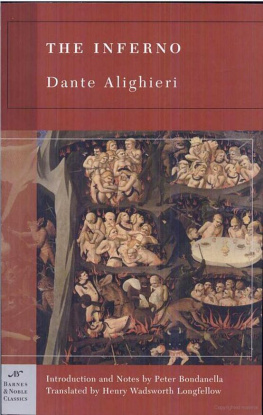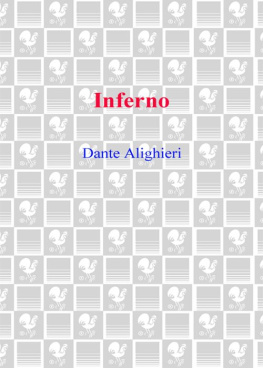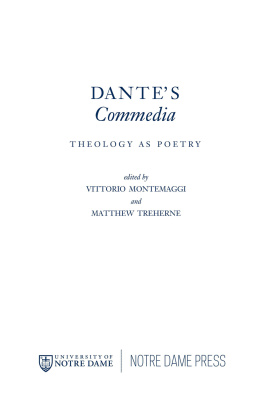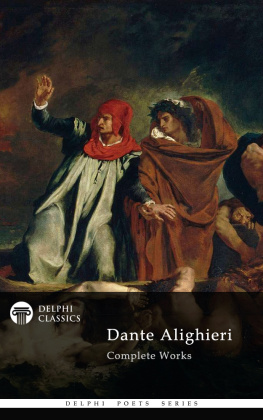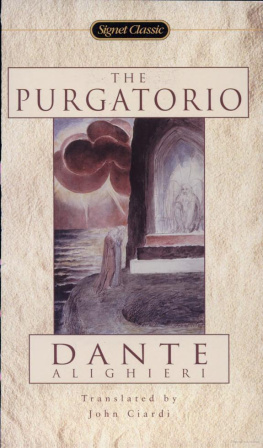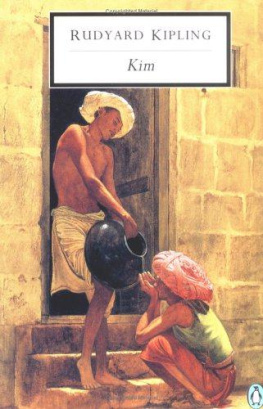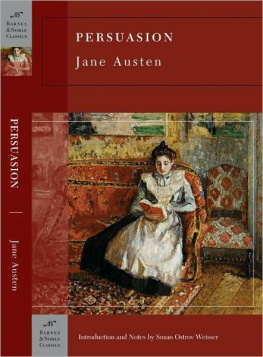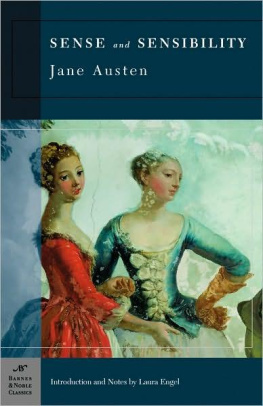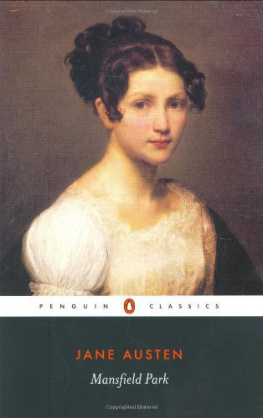Table of Contents
From the Pages of the Inferno
Midway upon the journey of our life
I found myself within a forest dark,
For the straightforward pathway had been lost.
(Canto I, lines I-3, page 3)
And a fair, saintly Lady called to me
In such wise, I besought her to command me.
Her eyes were shining brighter than the Star.
(Canto II, lines 53-55, page 9)
Bestir thee now, and with thy speech ornate,
And with what needful is for this release,
Assist him so, that I may be consoled.
Beatrice am I, who do bid thee go.
(Canto II, lines 67-70, page 10)
All hope abandon, ye who enter in!
(Canto III, line 9, page 14)
Lost are we, and are only so far punished,
That without hope we live on in desire.
(Canto IV, lines 41-42, page 20)
They go by turns each one unto the judgment;
They speak, and hear, and then are downward hurled.
(Canto v, lines 14-15, page 25)
Envy and Arrogance and Avarice
Are the three sparks that have all hearts enkindled.
(Canto VI, lines 74-75, page 33)
But fix thine eyes below; for draweth near
The river of blood, within which boiling is
Whoeer by violence doth injure others.
(Canto XII, lines 46-48, page 61)
Therefore let Fortune turn her wheel around
As it may please her, and the churl his mattock.
(Canto xv, lines 95-96, page 80)
Behold the monster with the pointed tail,
Who cleaves the hills, and breaketh walls and weapons,
Behold him who infecteth all the world:
(Canto XVII, lines I-3. page 86)
Justice of God! O how severe it is,
That blows like these in vengeance poureth down!
(Canto XXIV, lines 119-120, page 125)
Rejoice, O Florence, since thou art so great,
That over sea and land thou beatest thy wings,
And throughout Hell thy name is spread abroad!
(Canto XXVI, lines I-3, page 132)
And all the others whom thou here beholdest,
Sowers of scandal and of schism have been
While living, and therefore are thus cleft asunder.
(Canto XXVIII, lines 34-36, page 144)
And by the hair it held the head dissevered,
Hung from the hand in fashion of a lantern,
And that upon us gazed and said: O me!
It of itself made to itself a lamp.
(Canto XXVIII, lines 121-124, page 147)
Then I beheld a thousand faces, made
Purple with cold; whence oer me comes a shudder,
And evermore will come, at frozen ponds.
(Canto XXXII, lines 70-72, page 167)


BARNES & NOBLE CLASSICS
NEW YORK
Published by Barnes & Noble Books
122 Fifth Avenue
New York, NY 10011
www.barnesandnoble.com/classics
Dante is believed to have composed The Divine Comedy between 1308 and 1321, just
before his death. Longfellows translation of The Inferno first apppeared in 1867; the
present text derives from the Bigelow, Smith & Co. edition published in 1909.
Published in 2003 by Barnes & Noble Classics
with new Introduction, Notes, Biography, Chronology, Map, Inspired By,
Comments & Questions, and For Further Reading.
Introduction, Notes, and For Further Reading
Copyright 2003 by Peter Bondanella.
Note on Dante Alighieri, The World of Dante Alighieri and The Inferno,
Map of Hell by Marianne Luft, Inspired by The Inferno, and Comments & Questions
Copyright @ 2003 by Barnes & Noble, Inc.
All rights reserved. No part of this publication may be reproduced or
transmitted in any form or by any means, electronic or mechanical,
including photocopy, recording, or any information storage and
retrieval system, without the prior written permission of the publisher.
Barnes & Noble Classics and the Barnes & Noble Classics colophon are
trademarks of Barnes & Noble, Inc.
The Inferno
ISBN-13: 978-1-59308-051-8 ISBN-10: 1-59308-051-4
eISBN : 978-1-411-43240-6
LC Control Number 2003102762
Produced and published in conjunction with:
Fine Creative Media, Inc.
322 Eighth Avenue
New York, NY 10001
Michael J. Fine, President and Publisher
Printed in the United States of America
QM
Dante Alighieri
Dante Alighieri was born in Florence in 1265 to Alighiero Alighieri, who appears to have been a moneylender and property holder, and his wife, Bella. Alighieris was a family of good standing. Much of what we know of Dantes earliest years comes to us from La Vita Nuova (The New Life, completed around 1293), in which he tells the story of his idealized love for Beatrice Portinari, whom he encountered just before his ninth birthday. Beatrice died in 1290 but remained Dantes idealized love and muse throughout his life. Sometime around 1285 Dante married Gemma Donati, with whom he had three sons and a daughter.
Dantes public life is better documented than his private life. It is known that he counted among his closest friends the poet Guido Cavalcanti and the philosopher and writer Brunetto Latini, who is generally credited with bringing classical literature to thirteenth-century Florence. Dante began an intense study of theology at the churches of Santa Maria Novella and Santa Croce in 1292, and was well-versed in classical literature and philosophy as well as religious thought. Membership in a guild was a requirement to participate in the government of Florence, and Dante partook of this privilege after enrolling in the Arte dei Medici e Speziali (Guild of Physicians and Apothecaries) in 1295. He was elected to serve as a prior, the citys highest office, in 1300.
By early 1302, however, Dante had fallen out of favor in Florence. The Guelphs, the ruling body with whom Dantes family had long been associated, had split into two factions, the White and the Black Guelphs. Dante aligned himself with the Whites, who were opposed to the intervention of Pope Boniface VIII and his representative, Charles of Valois, in Florentine politics. While Dante was in Rome with a delegation protesting papal policy, Charles of Valois entered the city and a proclamation was issued banishing Dante and others, ordering them to be burned alive should they fall into the hands of the Florentine government.
Dante never returned to Florence, even after the exiles were granted a pardon. He probably began La Divina Commedia (The Divine Comedy) around 1380, during his extensive travels throughout Italy. The work brought him fame as soon as it began to circulate (in hand-copied form, at a time when the printing press had not yet been invented). Dantes travels took him to Verona, where he resided on and off for some six years, and finally to Ravenna, where he died on September 14, 1321, after falling ill in Venice.
Dante Alighieri is considered to be one of the worlds greatest poets. In the words of the twentieth-century poet T. S. Eliot, Dante and Shakespeare divide the world between them. There is no third.
The World of Dante and the Inferno
1265 In May or June (exact date unknown), Dante Alighieri is born to Alighiero Alighieri, a Florentine moneylender and renter of properties, and his wife, Bella, daughter of a family of good standing. (Dante discusses his ancestry in Paradiso [Paradise], cantos XV and XVI.)
1272 Bella dies.
1274 According to his later collection of poetry and prose La Vita Nuova (The New Life), Dante lays eyes on Beatrice Portinari for the first time during festivities on May I. Throughout his life and career Dante cites Beatrice as his muse and as the benevolent force in his life, maintaining that she inspired the best part of his work.
Next page
